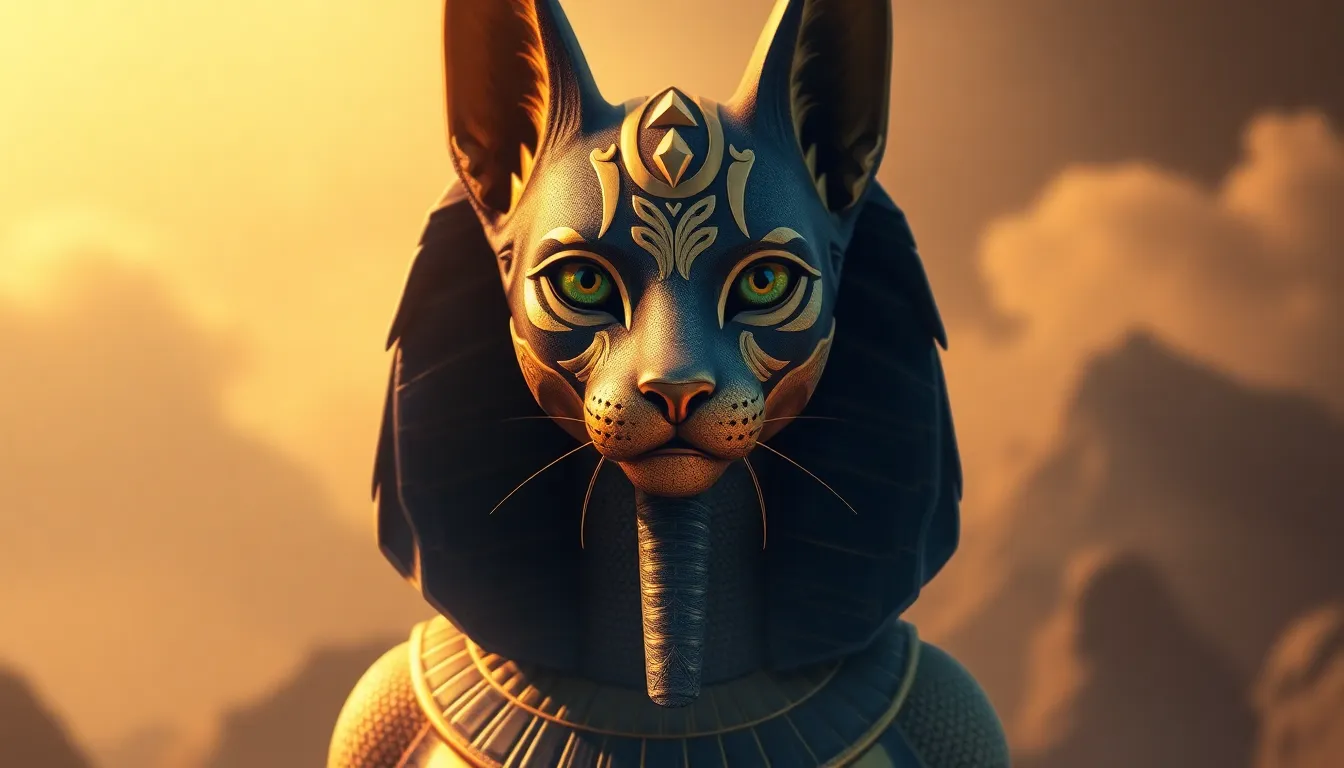The Story of Bastet: The Fierce Protector and Her Legendary Legacy
I. Introduction
Bastet, one of the most venerated deities in ancient Egyptian mythology, embodies a unique duality that captivates both historians and enthusiasts of mythology. Known as the goddess of home, fertility, and domesticity, she is equally recognized for her fierce protective nature. This duality makes her a symbol of strength and nurturing, representing the complex nature of femininity.
II. Historical Origins of Bastet
A. Early representations and worship in ancient Egypt
Bastet’s origins can be traced back to the early dynastic period of ancient Egypt, where she was initially depicted as a lioness. Early worship of Bastet was prevalent in the Nile Delta region, particularly in the city of Bubastis, which became her primary cult center. Archaeological findings have shown that she was revered as a protector of the pharaoh and the nation.
B. Evolution of her image from lioness to domestic cat
As time progressed, the image of Bastet transitioned from a fierce lioness to a more domestic cat-like figure. This transformation reflected the changing attitudes in society towards femininity and nurturing. By the time of the New Kingdom, Bastet was predominantly depicted as a woman with the head of a domestic cat, symbolizing her protective and nurturing qualities.
III. Symbolism and Attributes of Bastet
A. Iconography associated with Bastet
Bastet’s iconography is rich and varied, often showcasing her in several forms:
- As a lioness, representing her fierce warrior aspect.
- As a woman with a lioness head, highlighting her protective nature.
- As a domestic cat, symbolizing fertility, motherhood, and home.
- With symbols such as the sistrum (a musical instrument) and the ankh (symbol of life).
B. The significance of her dual roles as a protector and nurturer
Bastet’s dual nature is significant; she embodies the protective instincts found in motherhood while also representing the strength and ferocity of a lioness. This duality allows her to serve as a guardian of the family, ensuring safety and prosperity while also nurturing growth and fertility.
IV. Bastet in Egyptian Culture and Society
A. Role in daily life: protecting homes and families
In ancient Egyptian households, Bastet was regarded as a protector of the home and family. Statues and amulets of Bastet were commonly placed in homes to safeguard against misfortune and evil spirits. Women often prayed to her for fertility and safe childbirth, highlighting her nurturing aspect.
B. Festivals and rituals dedicated to Bastet
The Festival of Bastet, celebrated in her honor, was one of the most popular festivals in ancient Egypt. It included:
- Music and dance performances.
- Processions where people carried images of Bastet.
- Offerings of food and drink to the goddess.
- Rituals aimed at ensuring protection and prosperity for families.
V. Bastet as a Warrior Goddess
A. Tales of her fierce protective instincts in mythology
Bastet’s warrior aspect is vividly depicted in various myths. She is often portrayed as a fierce defender of the sun god Ra, battling the serpent Apophis to protect the world from chaos. Her protective instincts are celebrated in stories where she punishes those who threaten her worshippers or the pharaoh.
B. Comparisons to other warrior deities in ancient cultures
Bastet’s role as a warrior goddess can be compared to other deities across cultures, such as:
- Artemis from Greek mythology, who is both a protector and a huntress.
- Durga from Hindu mythology, known for her fierce protective nature.
- Freya from Norse mythology, who embodies love, beauty, and war.
VI. Bastet’s Influence on Art and Literature
A. Depictions of Bastet in ancient Egyptian art
Bastet has been a prominent figure in ancient Egyptian art, often depicted in paintings, sculptures, and jewelry. Artists portrayed her in various forms, emphasizing her dual nature. Many artifacts, including amulets and large statues, illustrate her significance in daily life and spirituality.
B. Her legacy in literature and modern media
In modern literature and media, Bastet continues to inspire. She appears in:
- Books and novels about Egyptian mythology.
- Films and television series that explore ancient cultures.
- Video games that incorporate mythological themes.
VII. The Worship of Bastet Today
A. Contemporary practices and reverence for Bastet
Today, Bastet is still honored by many who follow modern pagan practices, including those who revere ancient Egyptian deities. Rituals may include:
- Creating altars dedicated to Bastet.
- Offering food and flowers in her honor.
- Celebrating her festivals with gatherings and community events.
B. The resurgence of interest in ancient Egyptian spirituality
The interest in ancient Egyptian spirituality has seen a resurgence in recent years, with many people seeking to connect with the wisdom and practices of the past. Bastet, with her rich symbolism and nurturing aspects, serves as a powerful figure for those exploring these spiritual paths.
VIII. Conclusion
Bastet’s legacy as a fierce protector and nurturing goddess continues to resonate today. Her story embodies the complexities of life, reflecting both strength and tenderness. As we explore her mythology, we are reminded of the enduring power of divine femininity and the importance of protection, family, and home in our lives. Bastet’s tale remains relevant, encouraging us to honor both our fierce instincts and nurturing spirits in the modern world.




